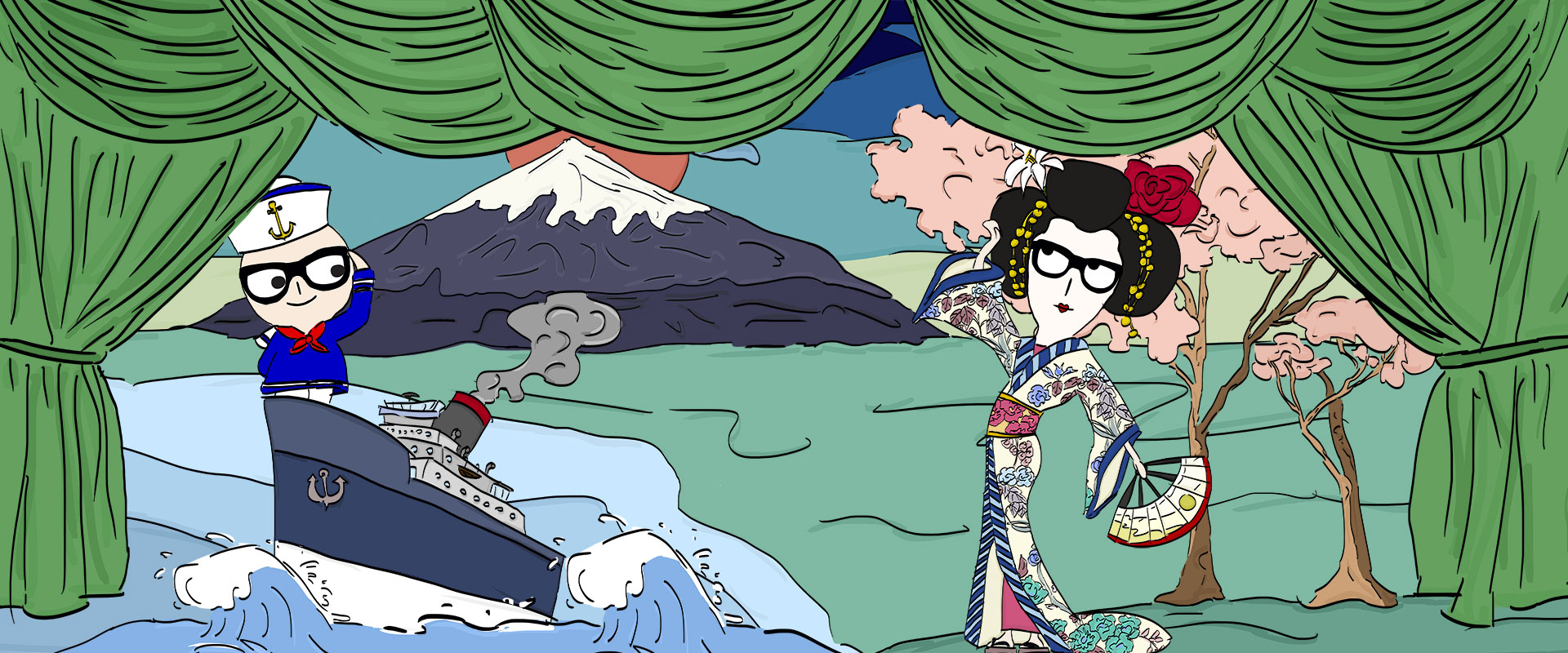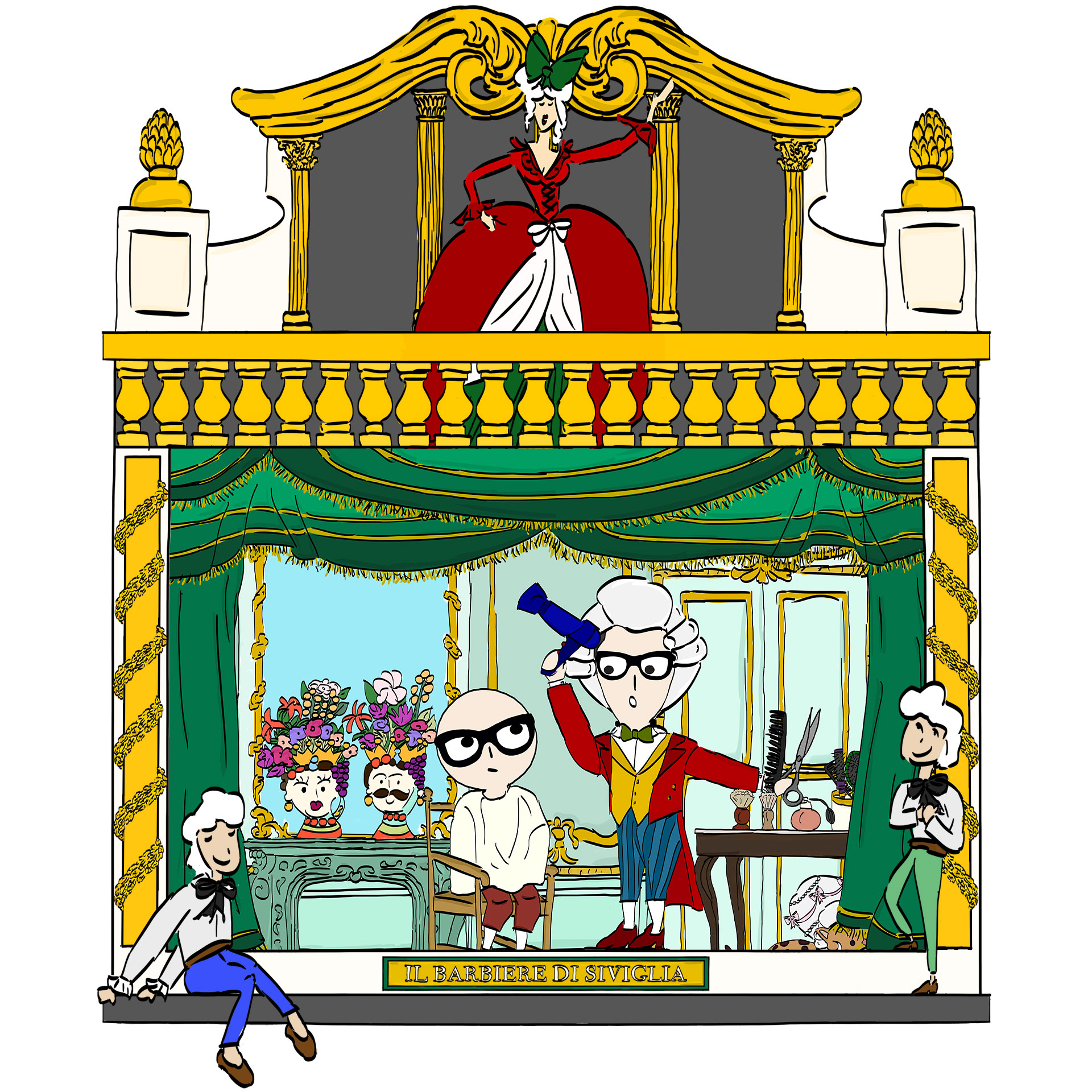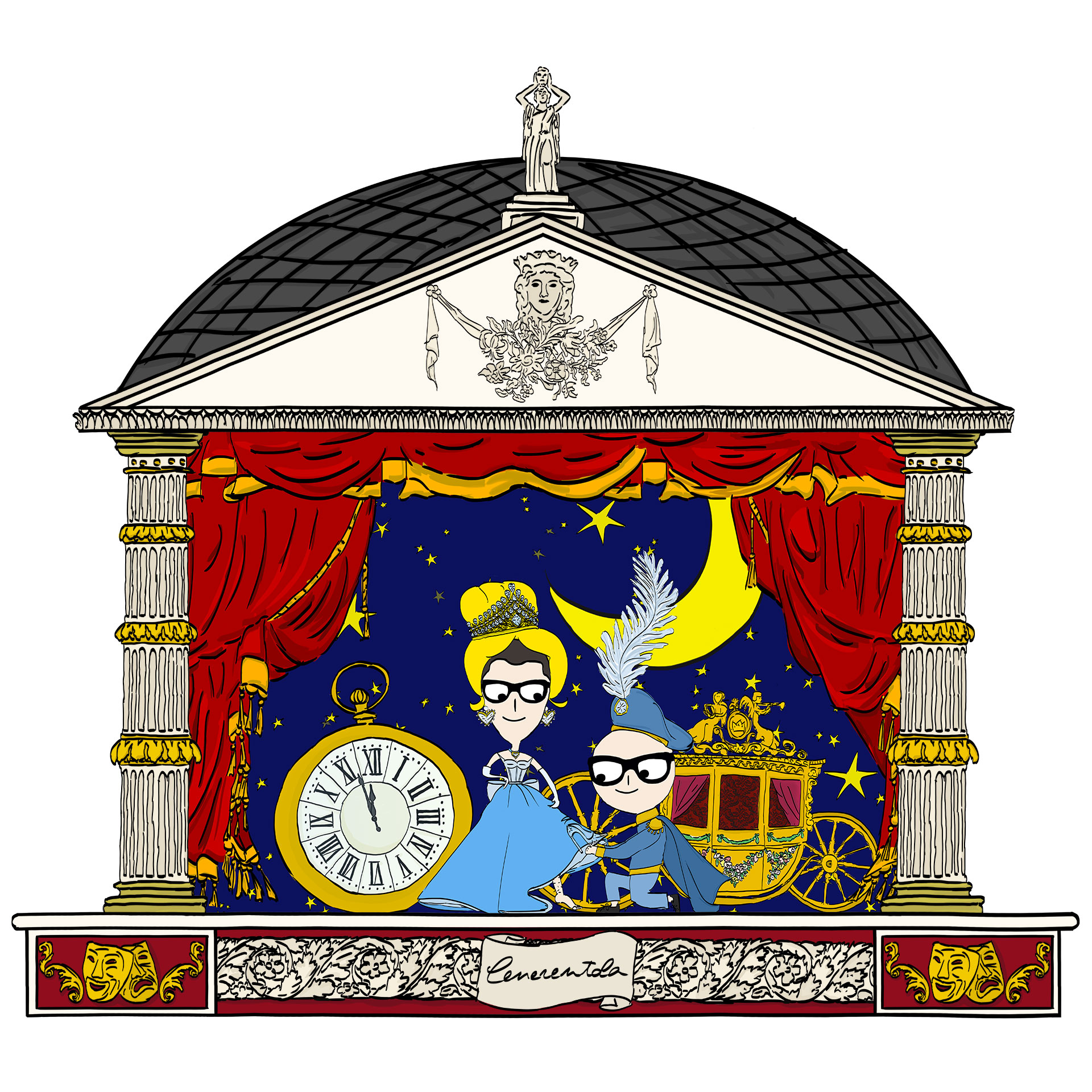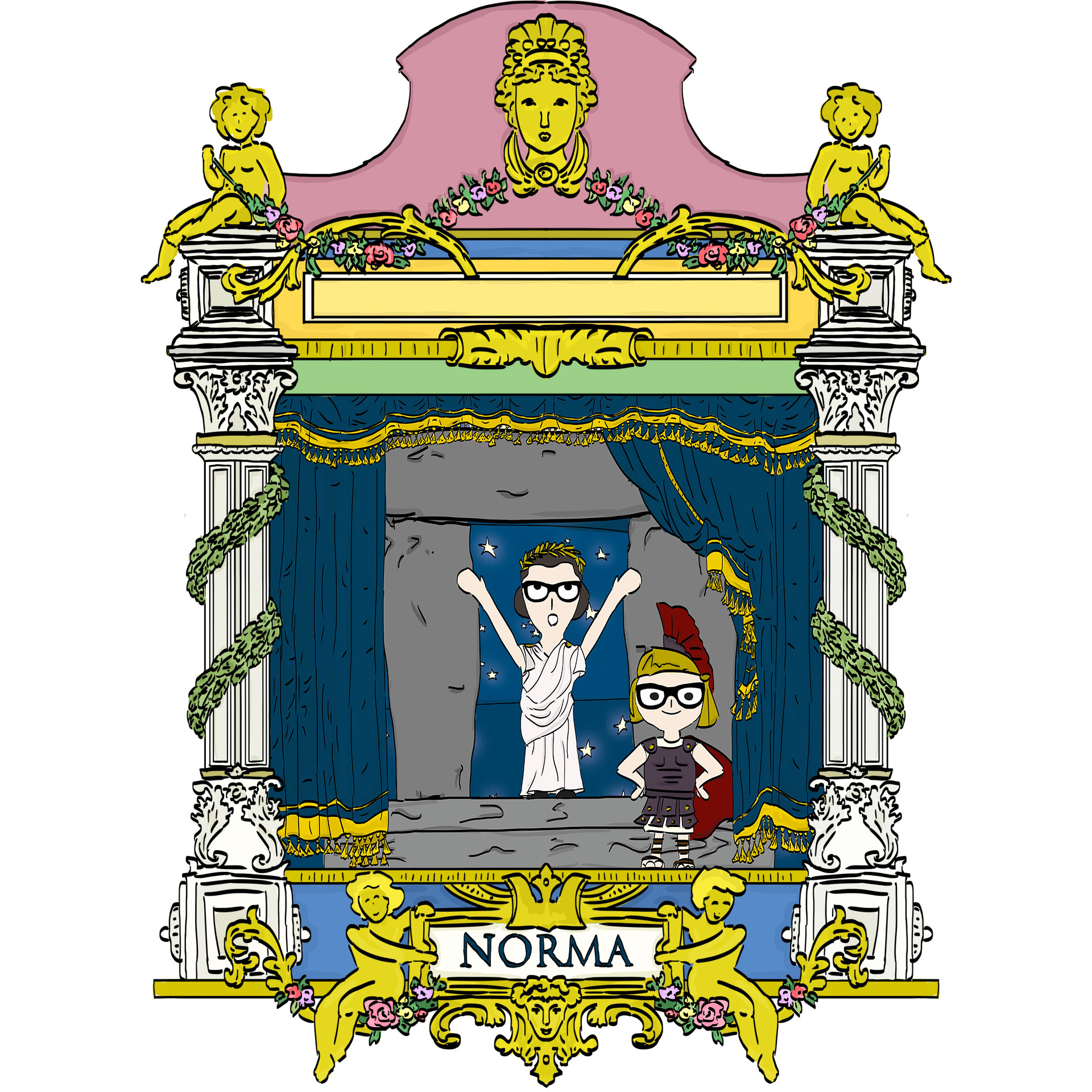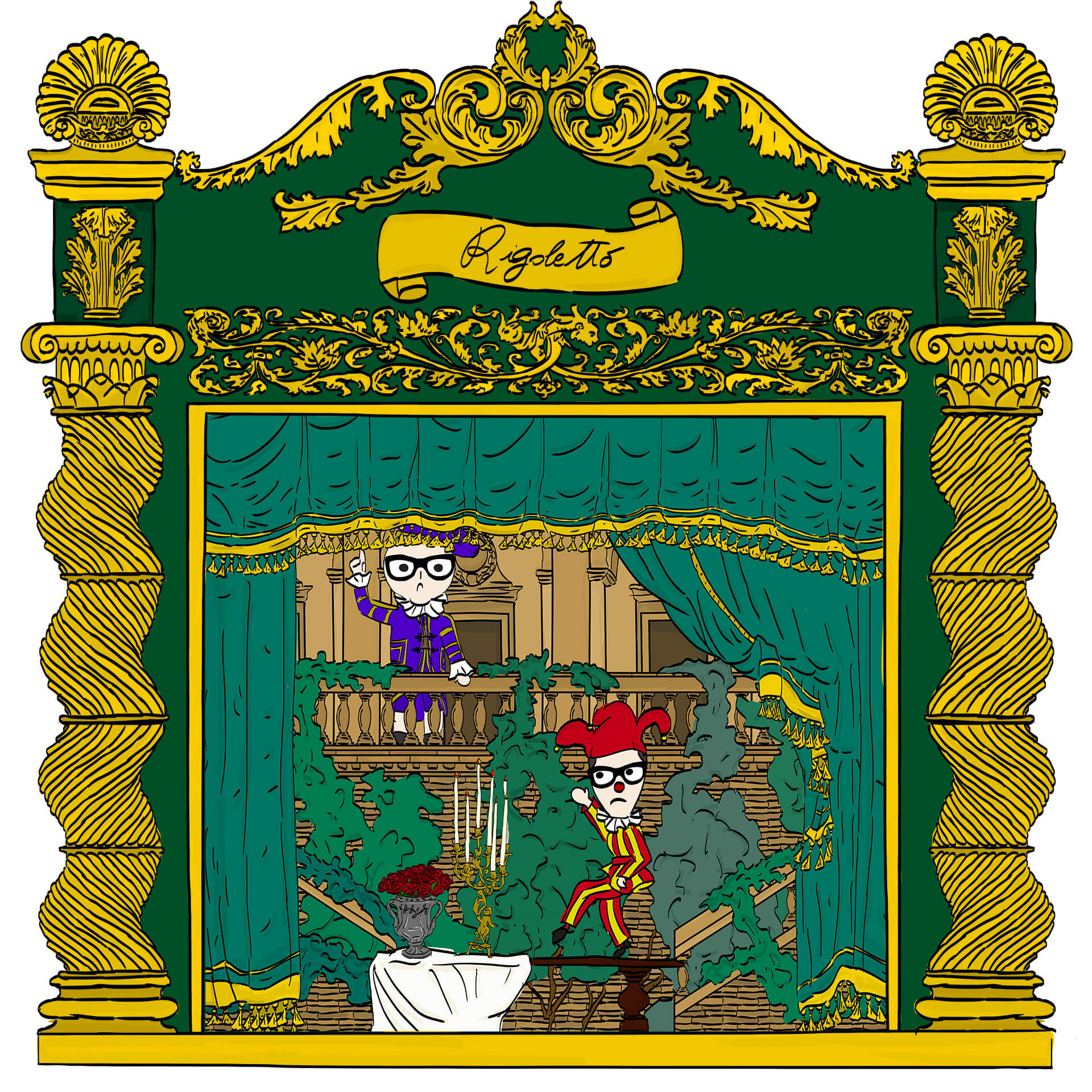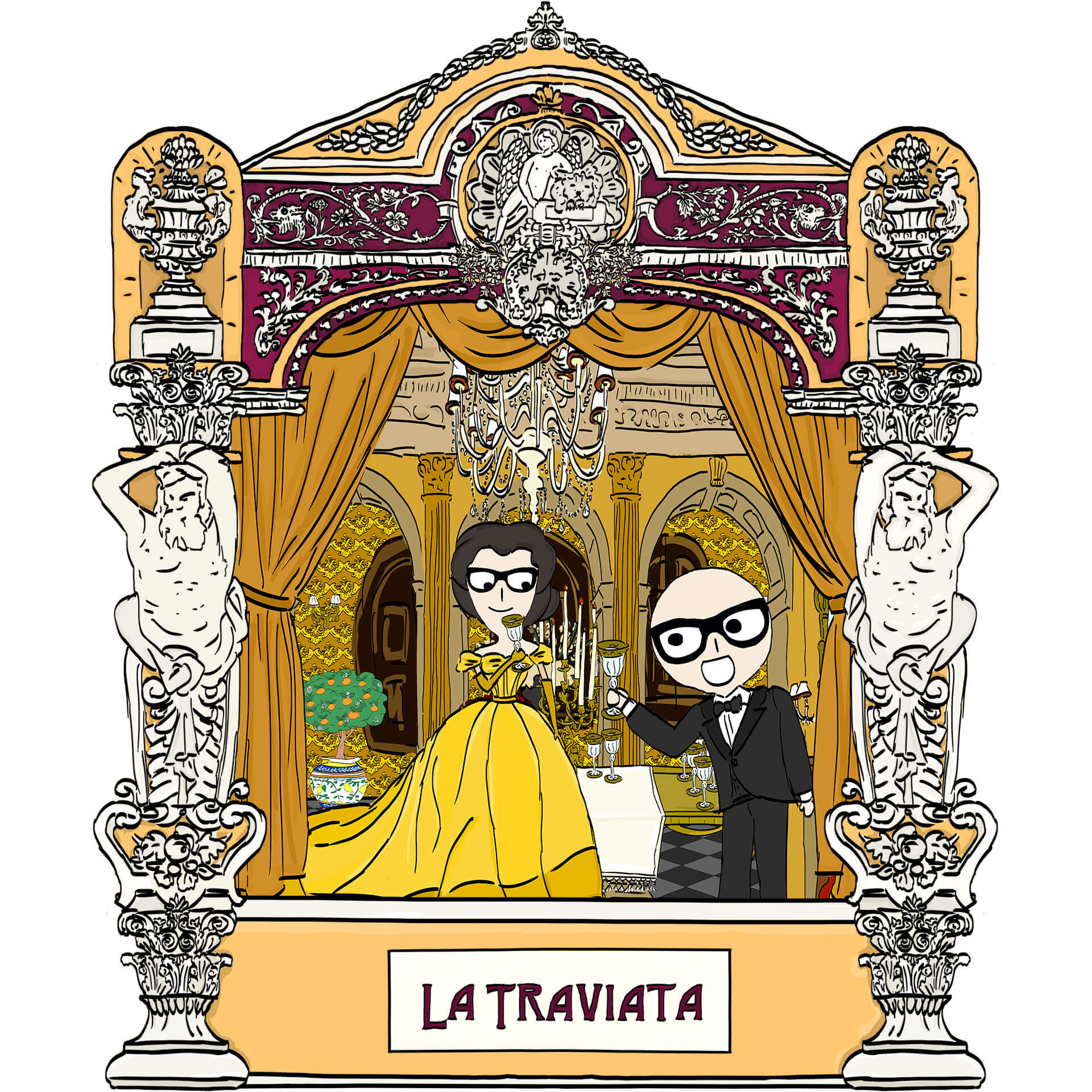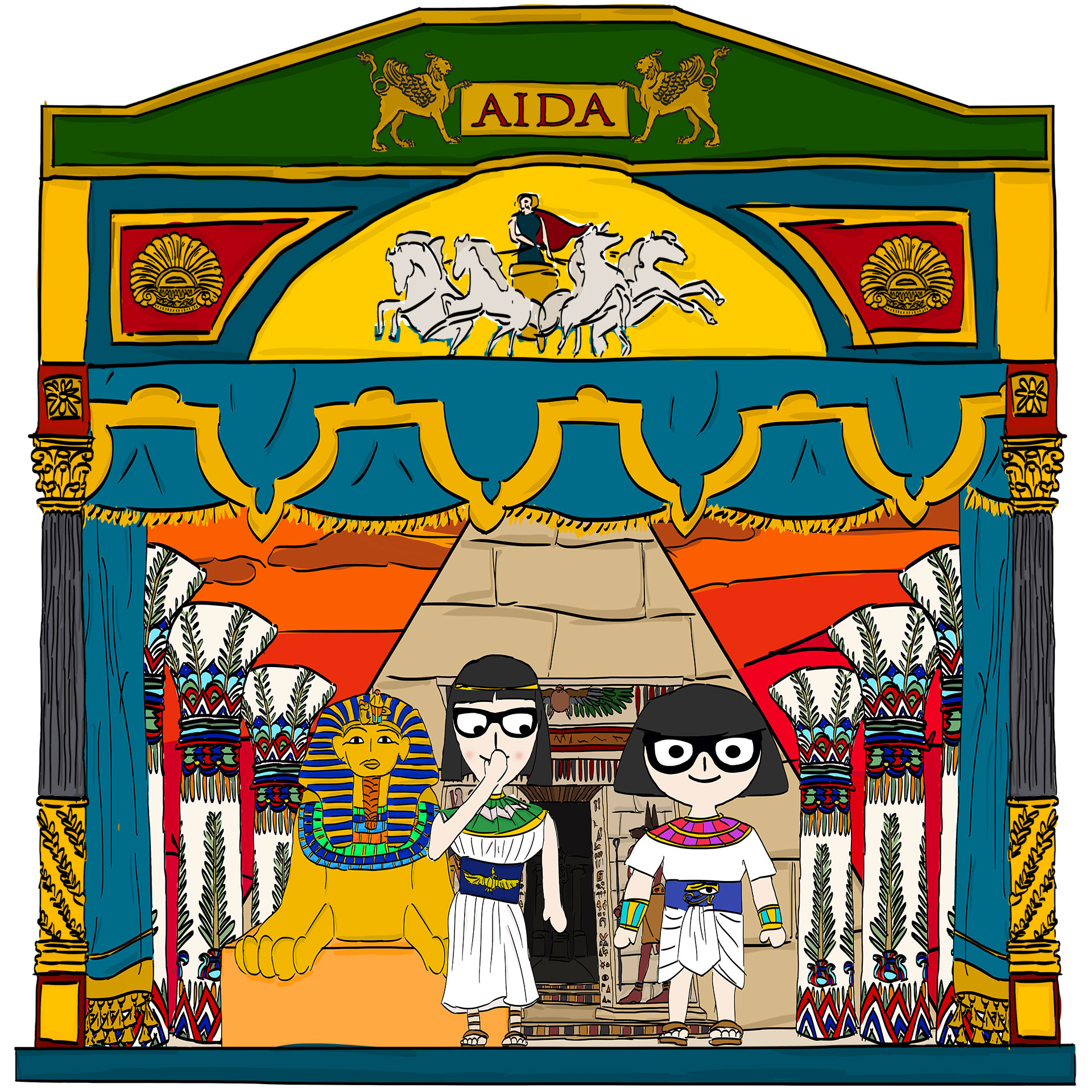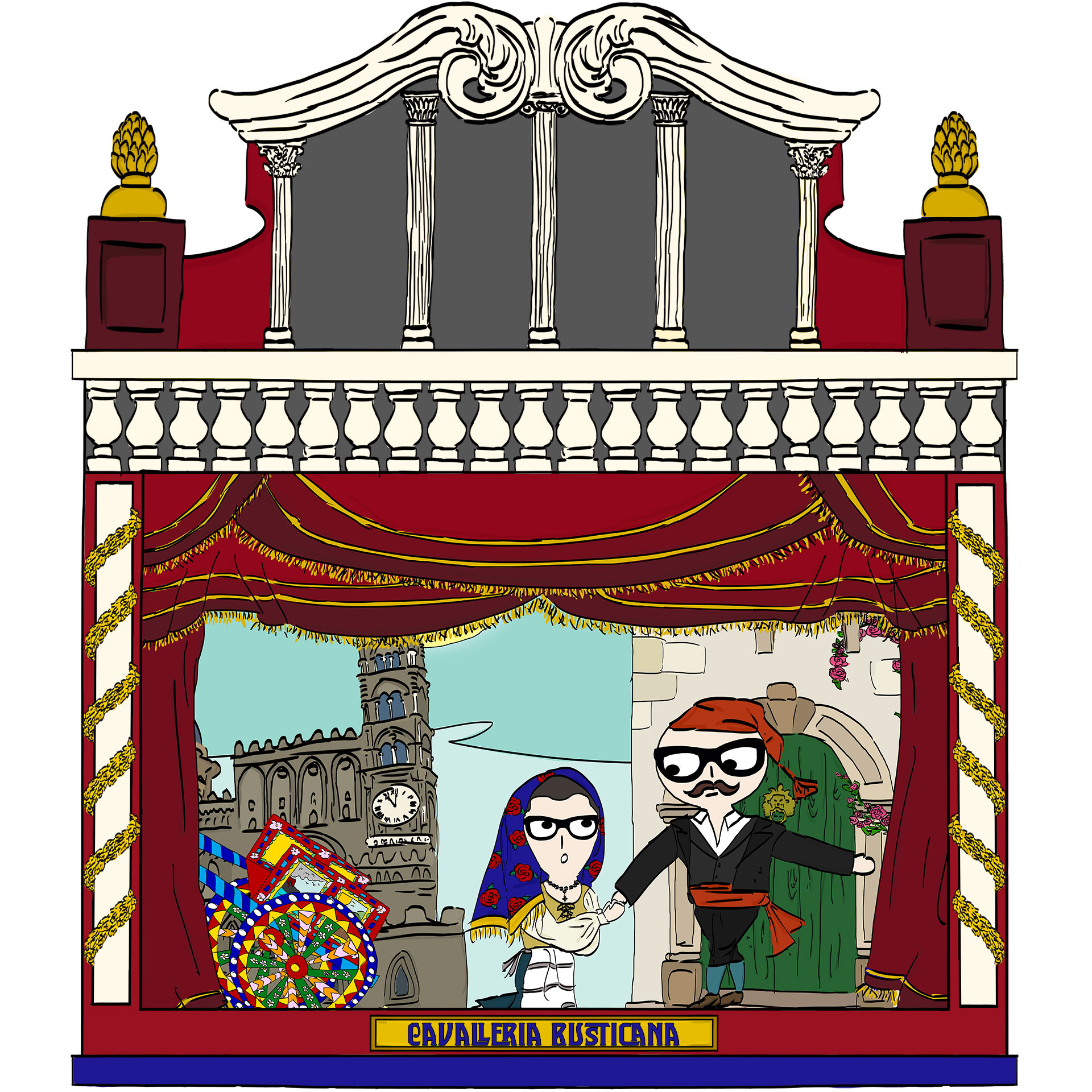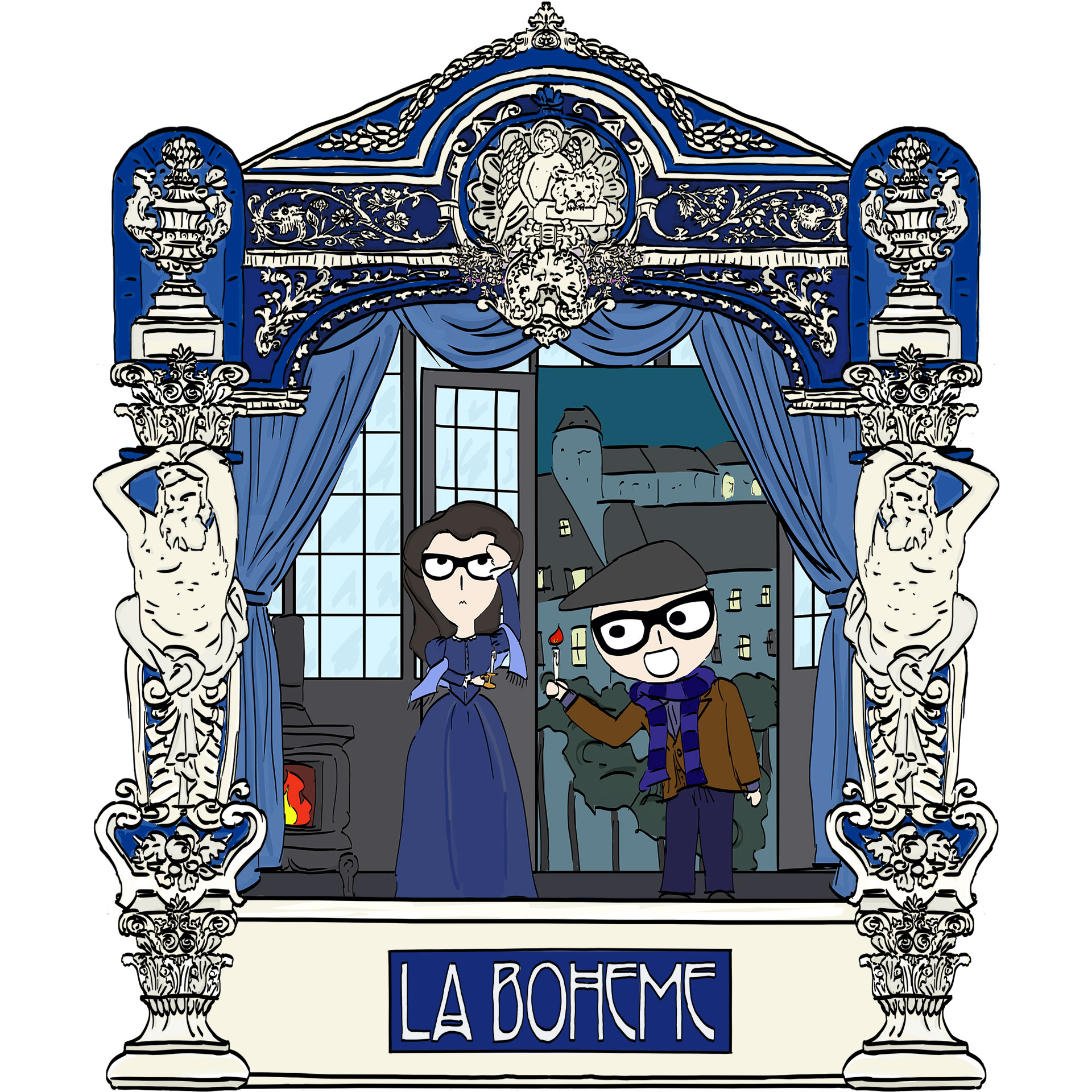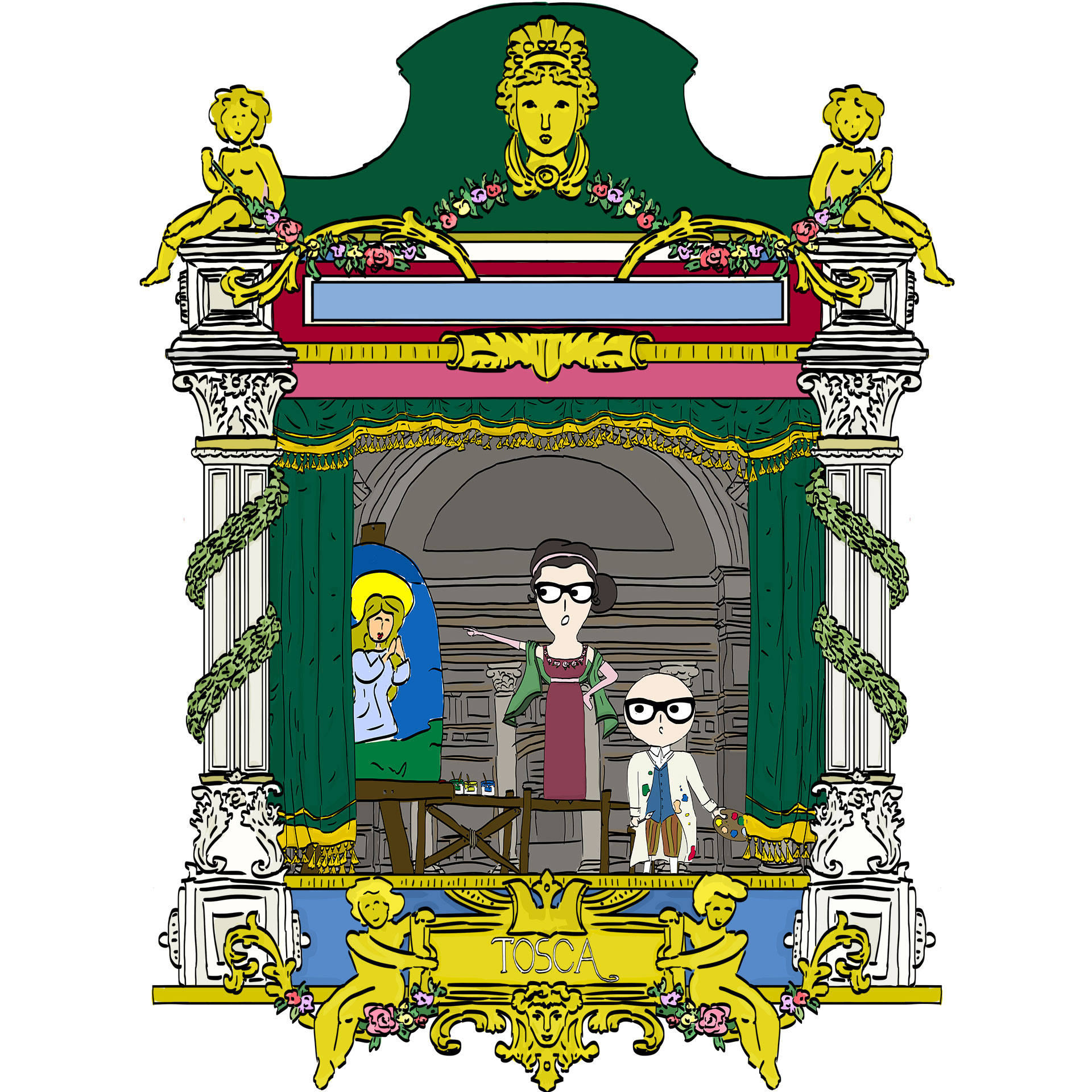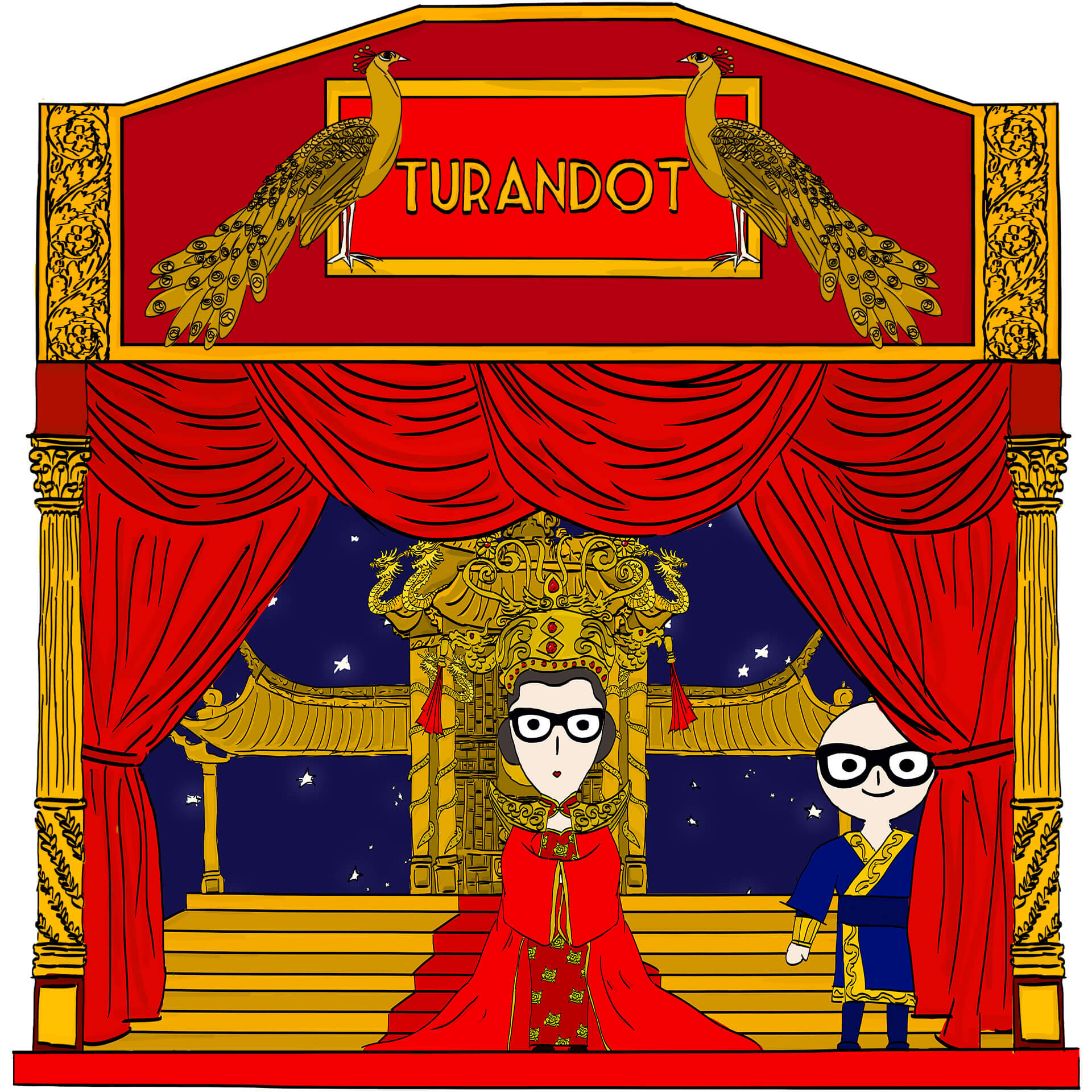To mark the opening of the Milanese Opera season 2016/17 on the 7th December with Madame Butterfly, the windows of the Spiga 2 store have been decorated with miniature scenes of 13 Italian operas.
Dolce&Gabbana’s love of opera has long been documented. The baroque opulence of the original productions and costumes, the sheer drama of the plots, the emotional music, poetic lyrics all play into that world of beauty and passion in which the designers thrive in and take inspiration from.
As well as funding projects liked to opera in the past, like the digital Libretti at the MET in NYC, in 2015, following the Alta Moda fashion show in the Toscanini Foyer of the La Scala Theatre in Milan, the brand has become Founding Supporters (Fondatore Sostenitore) of the theatre as a sincere and heartfelt tribute to the internationally renowned theatre that is a global symbol of culture, music and dance.
To mark the opening of the Milanese Opera season 2016/17 on the 7th December with Madame Butterfly, the windows of the Spiga 2 store have been decorated with miniature scenes of 13 Italian operas.
The Barber of Seville, Gioachino Rossini, 1816
The Barber of Seville, or The Futile Precaution is a timeless opera buffa in two acts by Gioachino Rossini with an Italian libretto by Cesare Sterbini, based on Pierre Beaumarchais’s French comedy Le Barbier de Séville (1775). The première of Rossini’s opera in 1816 at the Teatro Argentina, Rome. Proven as one of the the greatest masterpieces of comedy within music, The Barber of Seville, with a Shapespeare-esque comedy of errors feel has been described as the opera buffa of all opere buffe, even after two hundred years. The plot is a basic love triangle, the young rich duke (who has a penchant for disguises) loves a young rich ward, she requites his sentiments, but she is promised to a grumpy old man, who is more after her dowry than her heart. Figaro, the barber is the unwitting ally to the young couple and servant of the rival…
Cinderella, Gioachino Rossini, 1817
La Cenerentola, ossia La bontà in trionfo (Cinderella, or Goodness Triumphant) is an operatic dramma giocoso in two acts by Gioachino Rossini. The libretto was written by Jacopo Ferretti, based on the fairy tale Cendrillon by Charles Perrault. Rossini composed La Cenerentola when he was 25 years old, following the success of The Barber of Seville the year before. La Cenerentola, which he completed in a period of three weeks, is considered to have some of his finest writing for solo voice and ensembles, though he did edit the work in the following years, with the 1820 bravura replacement, “La, del ciel nell’arcano profondo” becoming the standard repertoire since its premiere. Rossini’s Cinderella is a little different from the fairy tale versions we all know well: the wicked stepmother is replaced by a wicked stepfather, Don Magnifico. While the more magical elements like the Fairy Godmother are replaced with terrestrial beings like Alidoro, who is a philosopher and is also the Prince’s tutor, and Cinderella is identified not by her glass slipper but by her bracelet.
Norma, Vincenzo Bellini, 1831
Norma is one of the most acclaimed and beautiful operas by Vincenzo Bellini. The libretto of this tragic opera which sees Norma as its protagonist was written by Felice Romani and inspired by Norma, ou L’infanticide (Norma, or The Infanticide) by Alexandre Soumet. The opera debuted in Milan in 1831 bewitching the audience. Norma, considered a leading example of the bel canto genre, has seen some of the most important sopranos, including Maria Callas who performed the title role 89 times and reducing audiences to tears with the stunning aria Casta Diva. The story is set in the 1st century BC in Gaul, where the Romans and the Druids are at war. Notwithstanding the conflict the Roman proconsul Pollione and the Druid high priestess Norma start it up together, with the union producing two secret children. The opera begins with Norma discovering that the proconsul has replaced her with a younger Druid priestess. The plot unfolds on various levels, ending of course tragically, yet it explores important themes like female friendship.
Joan of Arc, Giuseppe Verdi, 1845
While not one of his most critically acclaimed operas, Verdi’s 1845 rendition of the iconic Joan of Arc has remained ingrained in our minds. The three act opera’s libretto was written by Temistocle Solera (the same hand of Nabucco), and its Verdi’s 7th opera. Partly reflecting the story of Joan of Arc, it appears to be loosely based on the play Die Jungfrau von Orleans by Friedrich von Schiller. Though the debut in 1845 in Milan and its subsequent performances Verdi’s Joan of Arc is not acclaimed as one of his best works. Dome arias, especially the soprano part is distinctive, in fact the great Renata Tebaldi’s performance in 1951 brought the opera back en vogue, though it has not been performed often in modern times.
Rigoletto Giuseppe Verdi, 1847
Giuseppe Verdi’s Rigoletto was written by Francesco Maria Piave based on the play Le roi s’amuse by Victor Hugo. Despite serious initial problems with the Austrian censors who had control over northern Italian theatres at the time, the opera had a triumphant premiere at La Fenice in Venice on 11 March 1851, in fact it was Verdi’s first major Italian triumph since the 1847 premiere of Macbeth in Florence. The setting is 16th century Mantua, and the main characters are the Duke, a sex mad lothario, Rigoletto, his jester, and Gilda, Rigoletto’s daughter who has (with reason) been locked away from the reach of the Duke all her life. Rigoletto is scathing and sharp tongues, revelling into the misfortunes of those touched (literally) by the Duke, but during the opera a series of chance meetings, misunderstandings, courses and hired assassins will change their lives forever.
La Traviata, Giuseppe Verdi 1853
Verdi’s La Traviata (The Fallen Woman) needs no introduction. One of the most performed and loved operas today, the themes of redemption through love, of misunderstanding due to prejudice, and ultimate forgiveness set to the dreamiest music have set La Traviata firmly in the hearts of every opera lover and opera neophyte. The Italian libretto by Francesco Maria Piave was based on La Dame aux Camélias, a novel by Alexandre Dumas, fils, and Alfredo and Violetta are a 19th cenruy example of flawed love. While almost every aria in the opera is stunning, the chorus in the first act “Libiamo ne’ lieti calici” has reached an almost mythical reputation.
The Sicilian Vespers Giuseppe Verdi, 1855
A mature Verdi penned The Sicilian Vespers (or Les vêpres siciliennes, as its most commonly known) for the audience of the Paris Opéra. Verdi’s intention was to divert from the Italian opera style and create something new, geared towards an audience known for its innovative tastes. The critically acclaimed 5 act (and a ballet) opera is set in 1282, during the Sicilian Vespers uprisings against the French oppressors. The ardour of the Italian opera style remained tangible, as intrigues, executions, blood baths and sham marriages pepper the historic context. The backstory to the unfolding of the drama is as follows: Procida, a leading Sicilian patriot, was wounded by French troops during their invasion of Sicily, and was forced into exile. Montfort, leader of the French troops, raped a Sicilian woman who later gave birth to a son, Henri. Montfort became governor of Sicily, while the Sicilian woman brought up her son to hate him, without revealing to Henri that Montfort was his father.
Aida, Giuseppe Verdi, 1871
Aida was commissioned by and first performed at Cairo’s Khedivial Opera House, but the premiere was delayed because of the Siege of Paris during the Franco-Prussian War (1870–71) as the scenery and costumes were stuck in the French capital, and for the opening of the Egyptian opera house Verdi’s Rigoletto was performed instead. Aida was finally performed in Egypt in 1871. The plot bears striking, though unintentional similarities to Metastasio’s libretto La Nitteti (1756), but the subject is attributed to Temistocle Solera: the Egyptians have captured and enslaved Aida, a Nubian princess, and military commander, Radamès struggles to choose between his love for her and his loyalty to the Pharaoh. The Pharaoh’s daughter Amneris is in love with Radamès, although he does not return her feelings. The tragic love story unfolds with Radamès continually divided between his romantic interests and his loyalty. Today the work holds a central place in the operatic canon, receiving performances every year around the world; at New York’s Metropolitan Opera alone, Aida has been sung more than 1,100 times since 1886.
Cavalleria Rusticana, Pietro Mascagni, 1890
The origins of the Cavalleria rusticana (“rustic chivalry”), a one act opera by Pietro Mascagni, adapted from a short story by Giovanni Verga, are singular. Milanese music publisher Edoardo Sonzogno announced a competition open to all young Italian composers who had not yet had an opera performed on stage: the best three operas composed exclusively for the competition were to be staged in Rome at Sonzogno’s expense. Mascagni, with the help of his friend Giovanni Targioni-Tozzetti composed Cavalleria Rusticana in just two months, and proceeded to win the competition to raucous applause and a standing ovation on opening night. Considered one of the classic verismo operas Cavalleria Rusticana is a story of honour, lost and regained set in a small village in Sicily. Due to its short running time, Mascagni’s opera is often played as a double bill with Leoncavallo’s Pagliacci. The Cavalleria’s most famous aria in the Intermezzo, just before the final scene in the town square.
La Boheme, Giacomo Puccini 1896
La bohème was composed by Giacomo Puccini to an Italian libretto by Luigi Illica and Giuseppe Giacosa, based on Scènes de la vie de bohème by Henri Murger. The inspiration of the libretto however are not a novel or a play, but a collection ov vignettes which have been manipulated into an opera with a plot, making this an almost entirely original. The opera’s appeal is more about the lifestyle is represents than the actual plot, with the characters feeling a bit empty and the story a little trite, but it has enjoyed continued success all over the world. Puccini’s critics (of whom he has many) also point out that the music lacks sophistication, which is subjective, though the aria “Che gelida manina” remains memorable.
Tosca, Giacomo Puccini, 1900
Giacomo Puccini’s Tosca is an unusual mix of modern history, lascivious women and corruption. The libretto of the opera, by Luigi Illica and Giuseppe Giacosa, is an adaptation of the very successful eponymous play by the French playwright Sardou, which toured Italy in 1889. The story adds a fictional layer to history as its set in the period of the Napoleonic wars and the invasion by the Emperor of Italy with the victory of the battle of Marengo (1800). The opera was political enough to have its premiere delayed due to unrests in Rome. Though not a hit with the critics, the fictional soprano, Tosca and her affair with the politicised painter Cavaradossi, and their oppression by the establishment hit home with the audience. Classed as a melodrama, the opera does of course not end well. Interestingly this piece was also the last stage appearance of Maria Callas in a special charity performance at the Royal Opera House in 1965, and Luciano Pavarotti’s Cavaradossi at the Met, in 2004 was also his last stage performance. To get a taste of the mood of the opera listen to the tenor aria “E lucevan le stelle”, and let yourself become emotional with its dramatic tone, melodramatic fears, yet very real sentiment.
Turandot, Giacomo Puccini and Franco Alfano, 1926
Turandot is an opera in three acts by Giacomo Puccini, completed by Franco Alfano, and set to a libretto in Italian by Giuseppe Adami and Renato Simoni. Though Puccini’s first interest in the subject was based on his reading of Friedrich Schiller’s 1801 adaptation of the play, his work is most nearly based on the earlier text Turandot by Carlo Gozzi. The original story is based on Turan-Dokht (daughter of Turan) from the epic Haft Peykar (The Seven Beauties), work of 12th-century Persian poet Nizami. The opera’s story though is set in China and involves Prince Calaf, who falls in love with the Princess Turandot, known to be particularly picky when it came to choosing a husband. To obtain permission to marry her, a suitor has to solve three riddles; any wrong answer results in death. Calaf passes the test, but Turandot still refuses to marry him. He offers her a way out: if she is able to learn his name before dawn the next day, then at daybreak he will die. That night prince Calaf sings the unforgettable Nessun Dorma, etched in the history of opera and recognized all over the globe. The opera was unfinished at the time of Puccini’s death in 1924, and was completed by Franco Alfano in 1926. The first performance was held at the Teatro alla Scala in Milan in 1926 and conducted by the legendary Arturo Toscanini.
Madame Butterfly, Giacomo Puccini, 1904
Puccini’s Madama Butterfly has a long and complicated history, though it is one of the most tragic and therefore well loved operas by the composer. The libretto is based on the short story “Madame Butterfly” (1898) by John Luther Long, and 1887 French novel Madame Chrysanthème by Pierre Loti. The original version of the opera, in two acts, had its premiere on 17 February 1904 at Teatro alla Scala in Milan, but it wasn’t well received. Puccini then went on to re-write it another 5 times, with the latest edition premiering in 1907 and becoming the one most performed today. The story is tragic: a young Japanese girl named butterfly becomes the wife of an American expat in Japan through an arranged marriage. The 15-year-old is however very excited about the “honour” bestowed upon her, but her spouse is luke warm at best, as he still wants an American wife. Naval officer Pinkerton leaves his young bride to return to the US for “work” only returning years later. While butterfly has been dutifully waiting at home for her husband, Pinkerton now has an American wife on his arm. Butterfly’s devotion, duty and love end up moving Pinkerton, but tragedy is not spared. Be prepared to cry.

